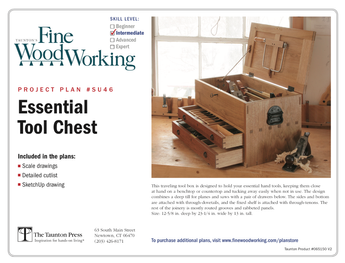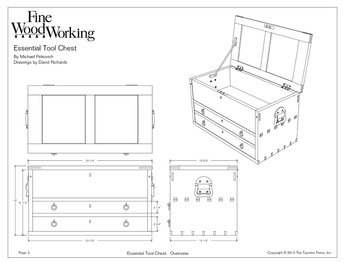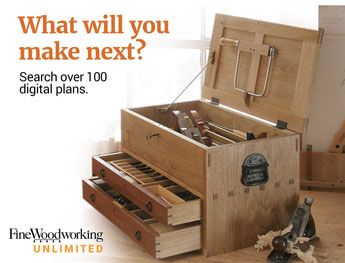I’m planning to construct a new home/shop.
Quick overview:
It’s a 30×60 metal structure. 1/3 will be where I live, and on the other side of the wall will be the rest as the shop.
The entire space, including the roof, will be insulated and conditioned via a package unit for the shop and a split (NOT mini) for the home.
The leg height is 9′, and the pitch is 6/12. I’m thinking of adding a second level and/or loft space.
I’ll have a 10×8 garage door, about 10-30×36 windows, and a 5-foot concrete perimeter. Slab foundation 6″ not sure if I need reinforced or not at this time.
I have the licenses to do all the mechanical/electrical myself, so nothing is really out of the question.
I want to ask you all what you would add/include/want in your shop if you could do it again.
What do you wish you could change?
When I purchased my service truck, I knew exactly what I wanted. I knew every bell and whistle required to order the holy grail of service trucks for what I do.
I don’t have the experience in woodworking to be able to do that with this shop.
I know some of what I want, but I don’t know what I don’t know.
So that’s the idea here: consult the true masters who know every bell and whistle needed for a dream shop that I can account for and prepare for from the start.
I would appreciate any ideas or suggestions. Nothing is too small or too large to mention.















Replies
Taunton Press has published some excellent books in the past on workshops and their design (not just power tool layout and hand tool organization, but everything from the ground up), with detailed case histories of actual shops (not just one author's thoughts about what to include in a generic shop, which you probably already have in mind). Some of the design will depend on what type of woodworking you want to do.
Two that immediately come to mind are "The Workshop Book" by Landis and "The Workshop" by Gibson. (Following that pattern, the next one in the series should just be titled "The"). There may well be others, but these are two that I have. If no longer in print, which I suspect, check eBay of course.
The annual issues on tools & workshops may also be worth a look if you have them.
Good idea; I'll look those up for sure.
Thanks for the titles. I ordered one last week that's sitting on the porch right now.
Ill go ahead and look for the ones you suggested as well.
I love having books I never actually read lol. just kidding...kinda
Every time I pick up a book, I hear the machines calling me :(
Note: Bentusi, I just edited my response and added a few specific titles.
I built a 30 X 40 shop 20+ years ago and have a few observations.
To maximize tool placement flexibility install several 220V circuits with outlets for each circuit on each wall. Consider a finish room with explosion proof venting to the outside. Install dust collection ducting and electrical for tools that will be placed in the center of the room in the floor. Install the dust collector on a dedicated circuit, outside to minimize noise, with air-return to the shop. I had 11’ ceilings and 5 - 3 X 5 windows on 3 walls. The windows limit wall storage but the natural lighting is useful. Consider narrow windows (1’ X 5’?) high up to maximize wall space underneath. Leave room for wood storage, perhaps in the loft. Wireless speakers are great, mounted high and they’ll need outlets up there.
Great ideas, thanks.
I will definitely be rethinking my window plan.
A raised floor with DC and electric going underfoot. I have this going overhead now and it's OK. A raised floor gets your feet off the concrete which is good for joints and is much warmer in the winter. Agree with the clarestory windows up high. Idalso go with a lot of options for ventilation or a finishing room as the chemical smells seem to be worse for me as I age.
second DC and electric and air in floor. if slab, and don't want to raise floor, before pour slab, block out a 'trench' (6x6sih) around perimeter and a run to middle of shop, with lip at top for cover.
Just a thought - living in a ~600 sq ft area portion of the building is fine for you now (I'm guessing you might be single?), but if you ever get married (and especially if you have kids), you or your spouse might want a more conventional house later on. I assume that you will be building this on enough land that would allow you to build a house near your shop in the future. If not, you might have to sell the building and create another shop elsewhere.
You probably already have done so, but you might also want to check out homeowner's insurance before you build; I read of a local person who tried to set up housekeeping in his airplane hanger after getting divorced, and he (a) was ousted because of local ordinances and (b) couldn't easily get insurance for it (I believe it was for safety reasons, as the structure didn't meet some aspects of housing codes).
Waist high electrical outlets are great, and ceiling outlets for plugging in plenty of LED lights and other tools will be appreciated. The more outlets the better.
Have a look at this:
https://www.nytimes.com/2024/12/19/realestate/barndominium-barndo-shouse.html
Email locked :/
In upstate NY it was common to convert a barn into a home. If you opened the barn door you saw stacked hay. Behind that was a often palatial living quarters. This was done to fool the tax accessor.
I second on the finishing room.
I was associated with two wood shops that burned to the ground! The first was in an old rickety converted farmhouse that was really a fire waiting to happen and then it happened! A new state of the art big beautiful dreamshop building was built to replace it ...and built to be fire resistant. I was long gone and far away but about 35 years later that woodshop burned to the ground as well!
Your going to be sleeping in the same building --I would suggest that installing a sprinkler system is worth a thought. Where I live All new houses are required to have sprinkler systems and if you add an addition that is larger than 10% of your existing house they require you to install a sprinkler system in your entire house!
"In upstate NY it was common to convert a barn into a home. If you opened the barn door you saw stacked hay. Behind that was a often palatial living quarters. This was done to fool the tax accessor."
This seems like an urban (or rural) myth. How would you insure it? Wouldn't that leave a paper trail? Wouldn't a tax assessor want to do more than simply open the one door you directed him to? Lots of questions...
A couple of thoughts come to mind:
- 30x36” windows are very small. There were studies done a long time ago which showed that spacing windows out around a room created big dark spaces between them which really strains eyes, having bright then dark then bright areas. Here in Vermont all the one-room school houses way back when they were everywhere (my rural town of 600+ people had 4 schools) had windows spaced out that way on both sides of the building, but the ones on one side were all taken out and put next to the ones on the other side as one big block for that eye strain reason.
- Maybe consider a radiant slab
- A tip I learned from a friend that I did when I built my shop, for work top counter areas use double receptacles at each location and instead of running 12-2 to each receptacle use 12-3, and feed the left receptacle with one of the 12-3 hot wires and the right one with the other hot. Each hot wire goes to its own 20 amp breaker. If you’re using 2 tools at once plug one in to the right receptacle and one to the left (I had a few guys in the shop) you’re much less likely to trip a breaker with 2 tools plugged in. An alternative if you don’t need as many receptacles is to break the bonding on a single receptacle at each location, like you would do if you were doing a switched control for a lamp plugged in, and run the 12-3 the same way, one to the top and one to the bottom.
- Think about putting your dust collection under the slab. As someone else said, I think, some under-slab electrical is good too, for machine locations.
I hadn't considered the eye strain. I can see that being a problem for me.
I will certainly have to rethink the window situation...
I saw a quonset hut garage being put up last year for a truck service shop. Before they poured the slab they ran waterproof EMT side to side every 1o feet or so through the slab and 4' up the wall on each side. They used a shop vac to pull heavy twine through each. Pretty smart way to future-proof with no way to go up & over.
Not trying to be argumentative, but would having dust collection under the slab ever become a problem if you process a lot of resinous softwood? I know that even in my home shop, if I have a project that involves softwoods (such as a deck or fencing), a gummy film develops inside my compound miter saw housing, inside the 4" dust collection system, etc. that gets pretty thick pretty quick. May not be a practical concern, but over time it might be hard to clean out the buildup.
Also, with floor sweep access, what if a small animal were to decide to nest in it, or even died in it? What if the shop experienced flooding?
Maybe having covered trenches in the slab for electrical and dust collection would provide easier future access if ever needed.
Valid concerns. I know a number of people with under-slab dust collection with no issues. The trench idea could be good, although it might compromise the integrity/structure of the slab, which could be minimized with careful design. If you Google “under slab dust collection”, as I just did based on your comment, you’ll see lots of posts with positive reviews, but also some with the same concerns you mention.
The floor I had in mind would have screwed down panels that could be easily removed. Like an old network room. I've had the overhead setup for years. Looking towards the future being on a ladder in my 60s or 70s to clean a line doesn't sound appealing and more dangerous than being on my hands and knees. I must not work with enough resinous conifers because I've never had the clogging issue.
I have many concerns with the underslab stuff as well.
I know better than to seal access from anything.
But i am deff planning on doing some trenches now. That is a great idea. I'll cover them when not in use. As someone mentioned here, I'll likely do the perimeter and one down the middle, with at least one section of the trench covered with concrete as a pathway for machines.
I would build the wall between shop and house very fire-proof. If there is anyone else in your life who will be in the house while you are in the shop, you might want to sound-proof the wall. I do that by double studding the wall, with a 2x6 top and bottom plate, and 2x4 studs that alternate sides, with fiberglass in the wall. Only the top and bottom plates transmit sound from one side to the other. I've also done this in house construction between bathroom and bedroom using 2x4 plates and 2x3 studs (ripped 2x6s.)
600 sq. ft. is larger than many of the tiny homes people are making and living in these days. Just need to be organized and not mind compact interior spaces.
My shop is 30x40. I broke it up into 3 rooms: machine room, bench room, and what was supposed to be a finishing room, but became a metal working room (big lathe, surface grinder, sharpening bench, etc.) Interior walls are actually quite helpful for storage, interior wiring, shelving, etc. My south wall is mostly windows (passive solar) so I find the wall space helpful. It pays to lay out the design of the shop before building it so you can make sure the walls are not limiting.
I have a concrete slab, so dust collection is above the floor. Only a little is on the ceiling; the pipe on the south wall is under the window sills, which are extended over the pipe to make them narrow shelves. Most of the rest are snugged under overhead lumber racks that start just above head height and go to the 10' ceiling.
I would never think of doing anything much with un-reinforced concrete. Reinforce it if you want it to stay together.
Happy shop!
Fire is one thing i have had a close call with myself.
I had some rubio rags self ignite in the trash bin. Thankfully i was in the shop when i caught a whiff.
So i will certainly be fire rating the wall that will seperate the shop. itll be insulated well. Thanks for the tips for sound proofing as well ill impletement something like that while im at it most likely.
600 is great for me. I prefer compact living spaces and im very used to it.
Easier and faster to clean and keep organized.
Thanks for all the replies, everyone.
Everything was very insightful.
My two big takeaways are that I need to go back to the drawing board on the slab.
Big number 2 is the window situation.
Other smaller ideas have been noted as well.
Very glad I made this post.
Lots of great comments here that will give you plenty to think about, but I would offer two suggestions on some of the comments.
First, unless I am reading too much into your original post, it sounds like you may be somewhat new to woodworking, especially in a larger space. Therefore, you may not really know exactly how you want to do this out your machinery and other tools requiring dust collection. If this is, in fact, your situation, then I would be quite wary about installing under-floor dust collection, as that locks you into a specific layout that you may find is not what you really want longer term. Overhead ductwork is quite easy to assemble (I've done several systems on my own, without any real help) and gives you a much better chance of making modifications in the future as your needs change. If, as has been suggested by others, you can run a main trunk line along a wall and then branch to the center of the room where necessary, the job is even easier. Seriously consider putting the dust collector into its own small room built with soundproof walls and you will have a much more enjoyable time in the shop. You can consider also putting your air compressor in this room, especially if it is a larger (noisier!) type of compressor. If you end up returning filtered air back into your shop, the "soundproofness" of the room won't be as great, but it will still be quite a bit quieter than just leaving the dust collector/compressor out in the open.
The suggestion to use 12/3 wiring to run two 20 amp electrical circuits to split loads is acceptable, but please do some research as to the correct way to accomplish this (MUST take each hot leg from opposite sides of the bus bar so that the 120 V loads are 180° out of phase with each other, and other safety related concerns having to do with switching off the circuit). Since you state that you have the proper electrical licenses to do the work, I am assuming you are well aware of these concerns, but it never hurts to make a safety suggestion.
Good luck in building your dream shop!
I want a set of garage doors on both the front and back of the house so I could easily drive through the garage to get things into the back. Also, though I often keep my garage door open when woodworking, it faces the street and isn’t the safest thing though my dog would disagree. I would prefer to open garage doors or others in nice weather that face into the back.
I’d want out of sight storage from the various stuff I need but isn’t elegant or inspiring to see.
Keep your shop ceiling at 10ft. in doing so you will have plenty of room for dust collection-lighting-heating-conduit. In floor conduit or dust collecting will greatly limit you in the future for your machine layout, and you will be moving machines around a lot. As far as your concrete slab goes, at least insulate the permitter about 2ft. from the outside or 2ft. down or both. The electrical in the shop will also be more advantage to you if you mount all electric on the walls- you can move or add at any time in the future. Good luck with your new shop!
Many good points (I so want a finishing room...) but I'm going to be boring and recommend good, flat access. If you are going to be installing big machines, you want large doors with flat or only very gently ramped access. You don't want level with the outside (I have that and keeping water out is not easy) but you do want to consider how you are going to roll half a tonne of machine in and out.
There is also advantage in having a flat area outside which is useful for stuff you don't want to do inside, and accessible for a truck with a tail lift.
One way to move heavy machines up a ramp is to use a power winch or even a manual come-along. The power winches come in 12V or 110V and can be anchored to the floor, a beam between structural members, etc.
I would definitely want the slab to be at least several inches above grade.
Here’s a few other ideas:
-hang a nice air filtration unit. It does help.
-have big tools on mobility bases.
-have smaller tools on flip top tables. This will save an amazing amount of space and will allow for more gear to be purchased!
-+1 for having a number of 230v outlets. Everything else needs 20amp outlets.
-a big +1 for separate circuit for the dust collection and a separate space for it outside. I tried to run mine on the same circuit as my planer which tripped the breaker all the time.
-remote controlled outlet. Very handy on the dust collection system and pretty cheap
https://www.amazon.com/gp/product/B09DSJ221Z/ref=ppx_yo_dt_b_search_asin_title?ie=UTF8&th=1
-daisy chain high output lighting. I like plenty of light.
https://www.amazon.com/gp/product/B0BPN62TJV/ref=ppx_yo_dt_b_search_asin_title?ie=UTF8&psc=1
-if you have lots of wallspace a tv or projector would be nice. A mini fridge too. Sanding gets veeerrrry boring.
-just a side note, this bit set is over $300 at woodcraft, but is $148 at amazon. No idea how long this deal will last.
https://www.amazon.com/dp/B0000225YX?ref=ppx_yo2ov_dt_b_fed_asin_title&th=1
One thing you haven't mentioned at all is, what do you do for a living?
You're constructing a "new" home/shop, which makes me think a "second"; are you retired and this is just a big hobby woodshop? You said you're new to woodworking so I'm thinking that's the case, but dayam that's gonna be a nice space for a hobby!
OR, are you planning to build and sell things? Will you sell on consignment, or mass-produce? Do you plan to sell via website alone, or would it be good to have part of this area a "showroom"? These are things that haven't been mentioned, and I think would have a big impact on your final path.
These are very good points.
I had under-floor dust collection made of 4 inch pvc and it worked great for 20 years. If you can get by with it I would suggest venting your dust collector outside with a cyclone for colletion (no filter). Some think this is a bad idea but here in Iowa farmers make more dust in one day than all the woodworking shops combined for a year.
A bit late, but if you're truly talking about any and all considerations:
-overhead material lifts seem cool.
-I'd want a section with a wooden floor underneath instead of a slab. I like machines on slab and my bench over a softer surface. Having to resharpen a chisel because you dropped it on your slab floor is not fun. You can certainly put a floor covering over a section of the slab, but no cost spared would have me keeping the floor on the same plane.
-I'd consider shop layout and material workflow as stated above. You have a garage door, can you store material nearby to use works (or a material lift) to unload, work on pieces then bring your finished products back towards the roll-up to then load it back out? Also some machine with forks on it (as maybe you have to get material from outdoors to inside your sweet shop with a material lift)
-There are some articles on here about lighting. Mentioned above are the bits about the window situation, and I wholeheartedly agree. Particularly when you're working matters, too. If you're working at night after your day job then making sure you have overhead lighting is sweet. And enough of it with no dark spots. And if you're doing anything with color, get something with a nice kelvin rating so you're not looking at it in a different setting and finding yourself confused. Raking light in finishing situations is helpful, but also not the end all be all. I've never been in a situation to decide K ratings of lights for color matching, so you'll have to do some research there.
-Something like Grit automation's products look cool. I'm considering such for my own shop, but don't know much with these systems. Unless you're pretty good at maintaining machines, it would be nice to track hours used and implement a routine maintenance schedule. An ounce of prevention...
-Air filtration is a must (proper dust collection is really a must). This can also be tied to something like Grit. PPE is everything and dust collection (for both hand tools and machines), as well as air filtration, should really be considered so. You're gonna die from something, but don't let it be from something preventable. Also getting dust in the living side of your house will get annoying quick.
-Compressed air delivery (clean and dry) around the shop. Air hoses suck. Not only for hand tools but also eventually machinery, as plenty of cool machines use compressed air for work holding or ancillary tasks.
-I dunno much about HVAC, but it would be dreamy to monitor and regulate humidity. There are plenty of tasks in all craft where humidity is a friend or foe. For instance, a small wool mill I worked in coupled something to their compressor to increase humidity. In my case, spraying finishes in a space that is essentially outdoors results in me pining for a way to remove humidity.
-Yes to what was said about power. Just have power everywhere. 20a 110 outlets are sweet. Power cords are like air hoses, they suck.
-I'd put a shop sound system in somewhere. Bluetooth headphones don't sound as good as speakers and you really should be wearing hearing protection in the shop.
-Put a slop sink somewhere easy to get to but out of the way. Washing out brushes, cleaning hands or various messes, you don't want to be going in to your living space to clean things.
The list could be endless...
Speaking of humidity I have a small dehumidifier running. It works till the humidity level is at the set level. I attached the optional drain hose so I don't have to empty it. The hose drains outside and keeps a small patch of grass green in the driest months. The AC will regulate humidity but I only run that maybe 3 months a year and only when I'm in there.